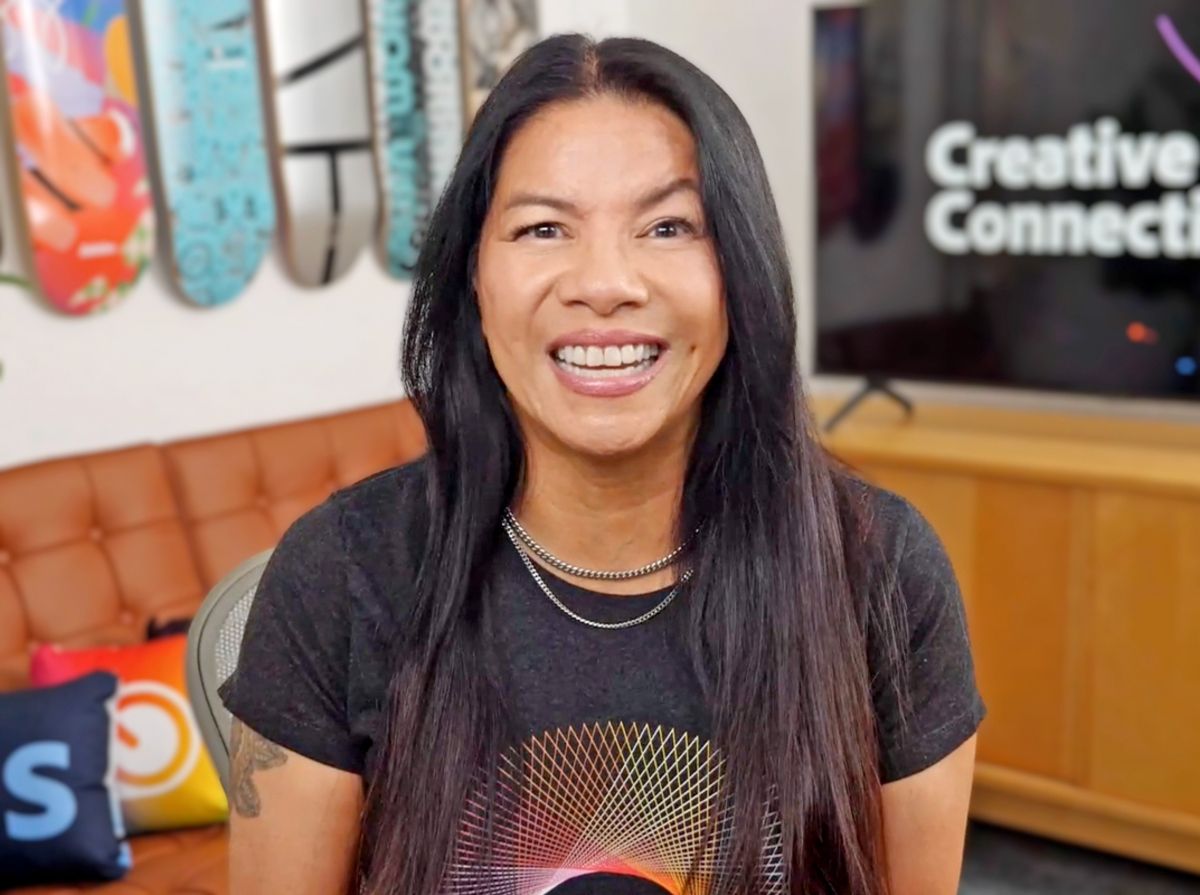Okay, so I thought I’d heard every AIGA leadership retreat story by now. I’ve literally been doing this podcast for that exact reason. But then Carolyn Colonna and Taylor Nall hopped on with Erik and me, and within minutes I was laughing so hard I had to mute myself because they were describing something called a “mullet meter” and I just couldn’t stop laughing, you guys.
I'm getting ahead of myself. Let me back up.
The Small Chapter That Could (and Did)
So here’s where my jaw dropped: Carolyn and Taylor’s Charlotte chapter—this scrappy group of transplants who were literally using AIGA as both their professional network AND their entire social life—was putting on 30+ events a year.
With just a couple hundred members.
I made them repeat that number because HOW?
The secret? They branded everything. And I mean everything. Buzz was their morning coffee discussion series. Meet Market was their bar networking nights (for the extroverts. Design Unplugged was their panel series. Each one had its own logo, its own vibe, its own repeatable structure so their volunteer board wasn’t dying.
And then they presented this whole programming arc at the Omaha retreat using a sliding mullet meter. Business in the front (Stefan Sagmeister, Debbie Millman, etc), party in the back (casual coffee mornings). Taylor designed the logo. I’m obsessed.
The genius part? By branding each event type, they made everything repeatable. No reinventing the wheel every month, no volunteer burnout. Just a solid system that kept the community fed—both professionally and socially.
Carolyn said something that made me pause: she showed up to the Miami retreat with literally zero social media accounts and left Omaha with 100 new Facebook friends.
Can you imagine? Going from carrying home a Ziploc bag full of business cards (which, let’s be honest, I still have somewhere in a drawer and will never call) to having an actual digital thread to people across the country?
That’s when AIGAers started taping hashtags to bar doors in Portland. Like literal pieces of paper that said “AIGA retreat” on them so people could find the after-party. We were absolutely chaos, but we were organized chaos, and honestly? That’s the dream.
It completely changed how we stayed connected after the retreats ended. Not just a business card you’d find six months later, but an actual ongoing relationship. Those digital threads turned retreat friends into real friends.
On Being a Professional Pyramid Topper
Listen, if you’ve been following this podcast, you know the human pyramid origin story debates run DEEP. Who started them? Where? When?
Carolyn casually said that she has photographic evidence from Omaha. Including one where she’s on top of a FIVE-TIER pyramid, literally holding onto a ceiling beam, thinking “If this goes down, I'm taking everyone with me.” I screamed.
She also claims to have a photo of herself doing a pyramid while riding on Ric Grefé’s back. RIC.
The point is: we’re still talking about these pyramids 18 years later. These ridiculous, probably-shouldn’t-have-attempted-them moments? They’re the connective tissue of our community. The stories we keep telling become the legends that bind us together.
The Secret Ingredient: Getting People Out of Their Comfort Zones
Taylor said something that I’m going to be thinking about for weeks: “You don’t know who I am in this costume, so I could just really get out of my shell.”
He showed up to Omaha in a full NASCAR outfit—legit professional racing gear that someone on their board somehow acquired—and it completely changed how he showed up.
That’s the thing we kept coming back to: all those activities we thought were kind of silly? The costume parties where you had to represent your city, the mugshots, the trading cards, that personality test where they made introverts and extroverts physically move to opposite sides of the room and the extrovert side got SO LOUD?
Those weren’t just icebreakers. Those were the things we actually remember 18 years later. Not the keynote content or organized leadership sessions (sorry, amazing speakers we definitely paid attention to). The connections. The moments where we were a little bit uncomfortable and a lot more ourselves because of it.
Carolyn nailed it: “These are the parts of the retreats that stick in our mind... it was really the relationships and the connections and the fun.”
Turns out the discomfort is the point. That’s where the memorable connections happen.
Why This Matters Now
After we finished recording, I couldn’t stop thinking about what Carolyn and Taylor built in Charlotte. And so many chapters right now are struggling to rebuild post-COVID. People are scattered, energy is low, everyone’s tired.
The Charlotte model wasn’t rocket science. They branded their events so volunteers weren’t reinventing the wheel every month. They created programming for everyone. They invested in the social fabric as much as the professional development. (And they started an “Other Interest Club” when they realized their entire friend group only ever talked about design, which is both hilarious and relatable.)
The takeaway? You don’t need to be a big chapter to make big impact. You just need to design intentionally for your community—both the quiet people and the loud ones, both the business and the party.
If all else fails? Build a mullet meter. I’m only half kidding.
Want to hear the full story about Josh Silverman's legendary text that moved 100+ people to the Doug Fir? Or why Debbie Millman was just calmly observing (not participating in) a human pyramid happening across a hotel bed? Listen to the full episode wherever you get your podcasts.
If You Loved This Episode, You Might Also Like:
Cheers & Tiers Episode with Aaron Schurts: Another Charlotte board alum who was at many of these same retreats (and probably in some of those pyramid photos)
Cheers & Tiers Episode with Gage Mitchell: Yes, another Charlotte person because apparently that chapter was STACKED
Spotify Podcasts https://open.spotify.com/show/0jcH8ocd0DaATC3c3ArSkw
Pocket Casts https://pca.st/0m1hq9e8
